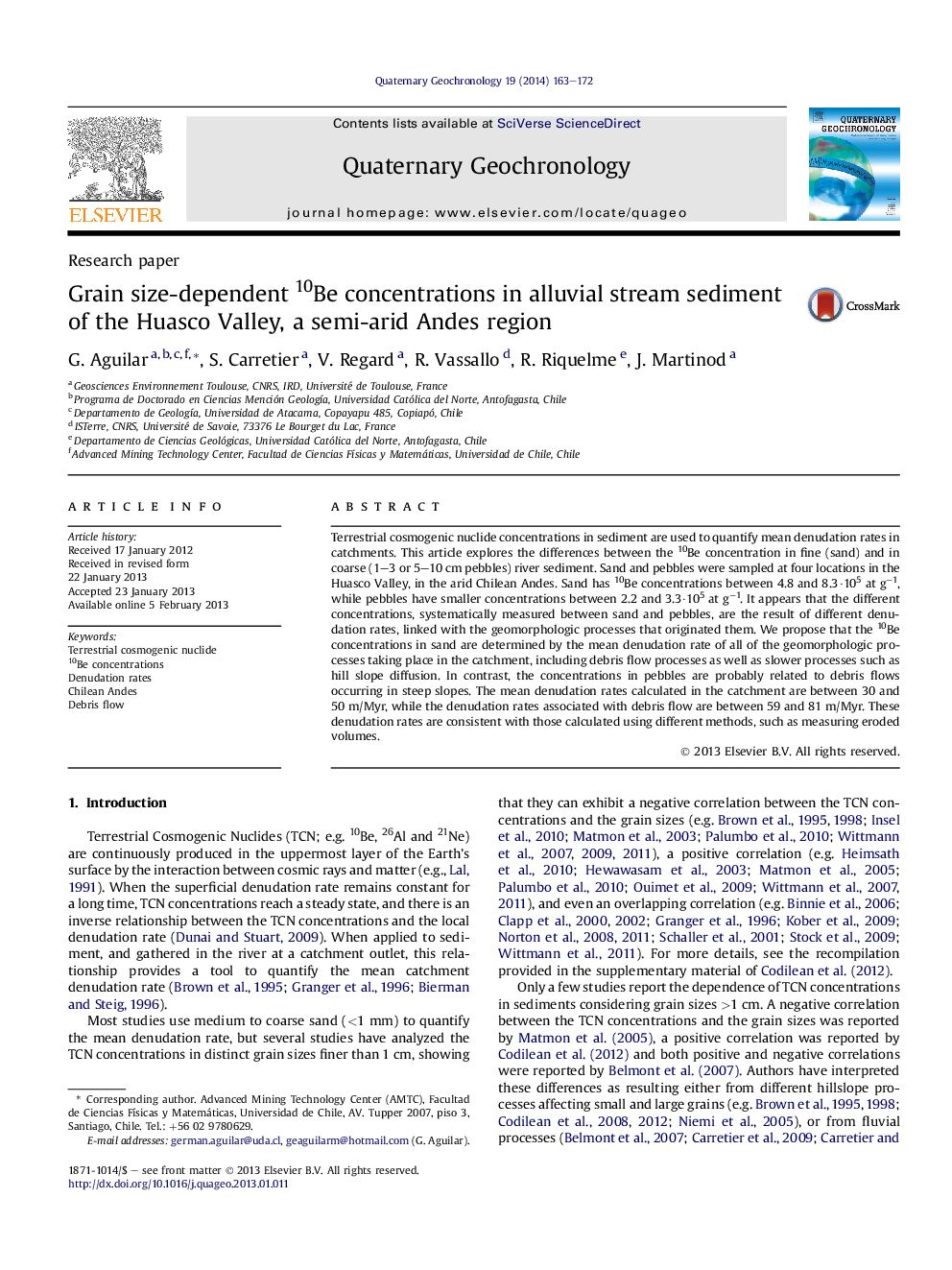| Article ID | Journal | Published Year | Pages | File Type |
|---|---|---|---|---|
| 4725009 | Quaternary Geochronology | 2014 | 10 Pages |
Terrestrial cosmogenic nuclide concentrations in sediment are used to quantify mean denudation rates in catchments. This article explores the differences between the 10Be concentration in fine (sand) and in coarse (1–3 or 5–10 cm pebbles) river sediment. Sand and pebbles were sampled at four locations in the Huasco Valley, in the arid Chilean Andes. Sand has 10Be concentrations between 4.8 and 8.3·105 at g−1, while pebbles have smaller concentrations between 2.2 and 3.3·105 at g−1. It appears that the different concentrations, systematically measured between sand and pebbles, are the result of different denudation rates, linked with the geomorphologic processes that originated them. We propose that the 10Be concentrations in sand are determined by the mean denudation rate of all of the geomorphologic processes taking place in the catchment, including debris flow processes as well as slower processes such as hill slope diffusion. In contrast, the concentrations in pebbles are probably related to debris flows occurring in steep slopes. The mean denudation rates calculated in the catchment are between 30 and 50 m/Myr, while the denudation rates associated with debris flow are between 59 and 81 m/Myr. These denudation rates are consistent with those calculated using different methods, such as measuring eroded volumes.
► 10Be concentration is lower in pebbles than in sand (Csand/Cpebbles ≈ 2). ► Different 10Be concentrations are the result of different erosion rates. ► Erosion rate calculated using 10Be in sand is representative of the whole catchment. ► Erosion rate calculated using 10Be in pebbles is representative of the debris flows.
